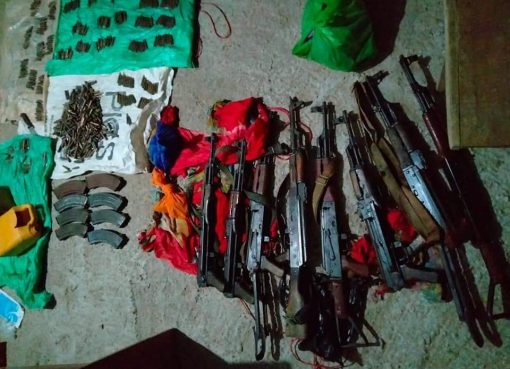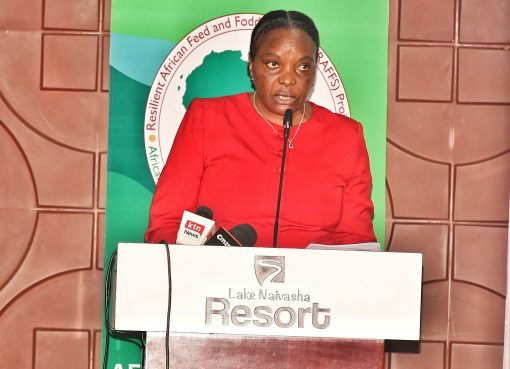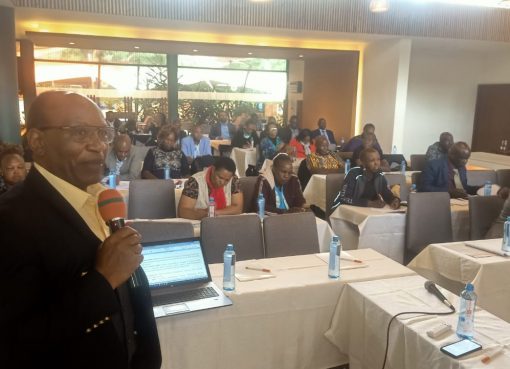The Kenya Off-Grid Solar Access Project (KOSAP) is a flagship project of the Ministry of Energy, financed by the World Bank. KOSAP will provide electricity to parts of the country that are not served by the national grid.
Although national electrification has risen tremendously over the last ten years to 60% connectivity for households, much of these connections have been achieved along the central corridor of the country along Mombasa -Nairobi- Lake Victoria, leaving North East and Northern Kenya largely in the darkness.
Kenya’s current electricity supply to the national grid capacity is 1,429 MW, according to a report by Kenya Electricity Generating Company (KENGEN) and is projected to grow to 15,000 MW by 2030. This electricity supply is predominantly sourced from hydro and fossil fuel (thermal) sources.
This generation mix comprises 52.1 per cent from hydro, 32.5 per cent from fossil fuels, 13.2 per cent from geothermal, 1.8 per cent from biogas cogeneration and 0.4 per cent from wind respectively.
Hence, the need for the country to continue tapping into more clean, cheaper and reliable renewable energy sources.
Only 15 per cent of Kenyan house-holds in rural areas use electricity for lighting and hence the need to increase this coverage. A further 42 per cent of the population in urban areas use electricity for lighting which is still low.
Kenya Power and Lighting Company Communication director Mr. Johnstone Ole Turana says KOSAP is a six-year project that started in July 2017 and is expected to end in June 2023. The KOSAP Vulnerable and Marginalised Groups Framework is financed by the World Bank Group to the tune of US$ 150 million and a grant from the Carbon Initiative for Development amounting to US$5 million to the Republic of Kenya. It aims to support the Government’s initiatives of ensuring increased electricity access to Kenya’s 14 underserved counties and the low income groups
“In has been difficult to connect these counties since the transformers we install can serve only 50 to 100 people within a radius of 600 meters and this has made it a bit expensive to connect every area of these counties to the national grid since they are very vast,” said Turana adding that the best alternative to ensure that the people in these counties get light in their homes is to use solar which is much cheaper.
Ole Turana says the KPLC was now coming up with an assessment of the solar needs for each of the 14 counties in a bid to come up with a project that is specific to each county.
“These solar panels will be provided free but we are looking at a possibility of the consumers paying something small in order to make them own the project and sustain it,” Ole Turana says said.
The project is jointly implemented by the Ministry of Energy, the Kenya Power and Lighting Company (KPLC) and the Rural Electrification Agency (REA).
KOSAP seeks to bridge this gap and targets to provide 1.3 million people in the large swathes of the North East and Northern Kenya with electricity. The project is therefore a critical plank of the National Electrification Strategy that will ensure universal access to electricity by 2022 and a key aspect of the Vision 2030, the country’s long-term development plan.
The project is intended to achieve the Government’s objective under vision 2030 which aims to transform Kenya into a newly industrialized middle-income country by providing a high quality of life for its citizens.
Under Vision 2030, Energy is identified as one of the key sectors that form the foundation for sociopolitical and economic growth. Promoting equal opportunities across the entire Kenyan territory and enhancing access to competitively priced, reliable, quality, safe and sustainable energy is essential to the achievement of this vision.
Who are the Beneficiaries?
The project will be implemented in West Pokot, Turkana, Marsabit, Samburu, Isiolo, Mandera, Wajir, Garrisa, Tana River, Lamu, Kilifi, Kwale, TaitaTaveta and Narok counties which collectively represent 72 per cent of the country’s total land mass and 20 per cent of the country’s population and include historically nomadic societies that even today continue to rely on pastoralism.
Their population is highly dispersed, at a density four times lower than the
national average. They present profound infrastructure deficits, including lack of access to roads, electricity, water, and social services. There is also significant insecurity in certain areas, giving rise to substantial numbers of displaced persons and livelihood adaptations that further undermine economic prosperity.
The proposed project is expected to provide electricity to approximately 250,000 households, 1030 community facilities, and 620 boreholes. Additionally, 81,000 efficient solar cook stoves will be sold at subsidized rates and installed in the target counties.
Government of Kenya has pledged to stimulate economic growth and accelerate job creation to improve the economic wellbeing of Kenyans. Among the many interventions to achieve this is expansion of the power distribution system to be within reach and thus enable more Kenyans to connect to the grid at affordable cost and hence initiate economic activities at the microeconomic level.
Due to the remoteness and sometimes dispersed nature of the target populations and considering the lifestyles and socio-economic status of those residing in underserved counties, the project will be designed to address high costs of provision of infrastructureservices, low affordability of the potential users, and sustainability of service provision.
Project objectives and implementation components
–
The Project Development Objective (PDO) of KOSAP is to increase access to modern energy services in underserved counties of Kenya. The PDO will be achieved through the implementation of four complementary components.
The first component involves use of mini-grids for Community Facilities, Enterprises, and Households. This component will support the electrification of areas where electricity supply through mini-grids represents the least cost option from a country perspective, as underpinned by the geospatial plan.
Depending on the number of users to be supplied, and the service level defined for each type of user (households, enterprises, community facilities, etc.), the generation system of each specific mini-grid will combine solar PV, battery storage and thermal units running on diesel. Mini-grids will be developed under a Public-Private-Partnership (PPP) arrangement.
All electricity consumers supplied through mini-grids will be KPLC customers and will sign contracts with KP and pay the same tariff for each category charged to users connected to the national grid, ensuring effective implementation of a national uniform tariff policy. The component will be implemented in approximately 120 locations throughout the 14 target counties, typically in mini-grids supplying 100-700 prospective users, with approximate total demand of 20-300kW.
The second component will comprise Standalone Solar Systems and Clean Cooking Solutions for Households. This component will support off-grid electrification of households in the 14 target counties where a standalone solar system is the most appropriate technology to deliver energy services, leveraging Kenya’s unique off-grid solar market dynamics and innovations. The component will provide incentives for solar off-grid companies currently operating in the more densely populated areas of Kenya to expand to underserved counties and provide services to the off-grid households in these counties.
These service will be provided through portable solar home systems which are well-suited to some of the population in the underserved counties, as households do not always live in permanent structures and affordability is increased by allowing households to pay for systems over time.
It will therefore support a transition from low-efficiency baseline stoves to cleaner, higher efficiency improved stoves. To accomplish this objective, cleaner household cooking appliances among others apart from lighting.
The third component is part a Standalone Solar Systems and Solar Water Pumps for Community Facilities. The community facilities considered in this component are the existing and upcoming health facilities (Levels 2 and 3), educational facilities (secondary schools and technical training institutes) and administrative offices (for example, assistant County Commissioner offices).
This component will support the provision of electricity services to community facilities in remote areas in underserved counties. A private sector contractor will be competitively selected for each service territory to supply, install, and maintain standalone solar systems in community facilities. A total of about 1,100 facilities could be reached via this component .KPLC, the implementing agency, will sign two contracts with the contractor in each service territory –one for the supply and installation of the standalone solar systems and the second for the provision of maintenance services for 7-10 year duration.
This component will also support financing solar powered pumping systems to increase sustainable access to water supply by equipping new boreholes and retrofitting existing diesel-powered boreholes associated with community facilities within the target counties. A private sector contractor will be competitively selected for each service territory to supply, install, and maintain standalone solar systems in community facilities. Facilities hosting these boreholes will have to pay the contractor.
Component Four involves Implementation Support and Capacity Building Component which includes Consumer Education and Citizen Engagement. It will support the consumer education and citizen engagement activities for the program’s key delivery areas (households, community facilities, water facilities in the underserved counties). Consumers in these areas may not be aware of the new technologies being presented and have a right to expect clear, thorough information about the advantages of the services and how to access them.
Thus Kosap project is a welcome idea and will go a long way in lighting up the far flung areas of this country unreachable by the normal electricity supply chain.
By Mabel Keya –Shikuku




